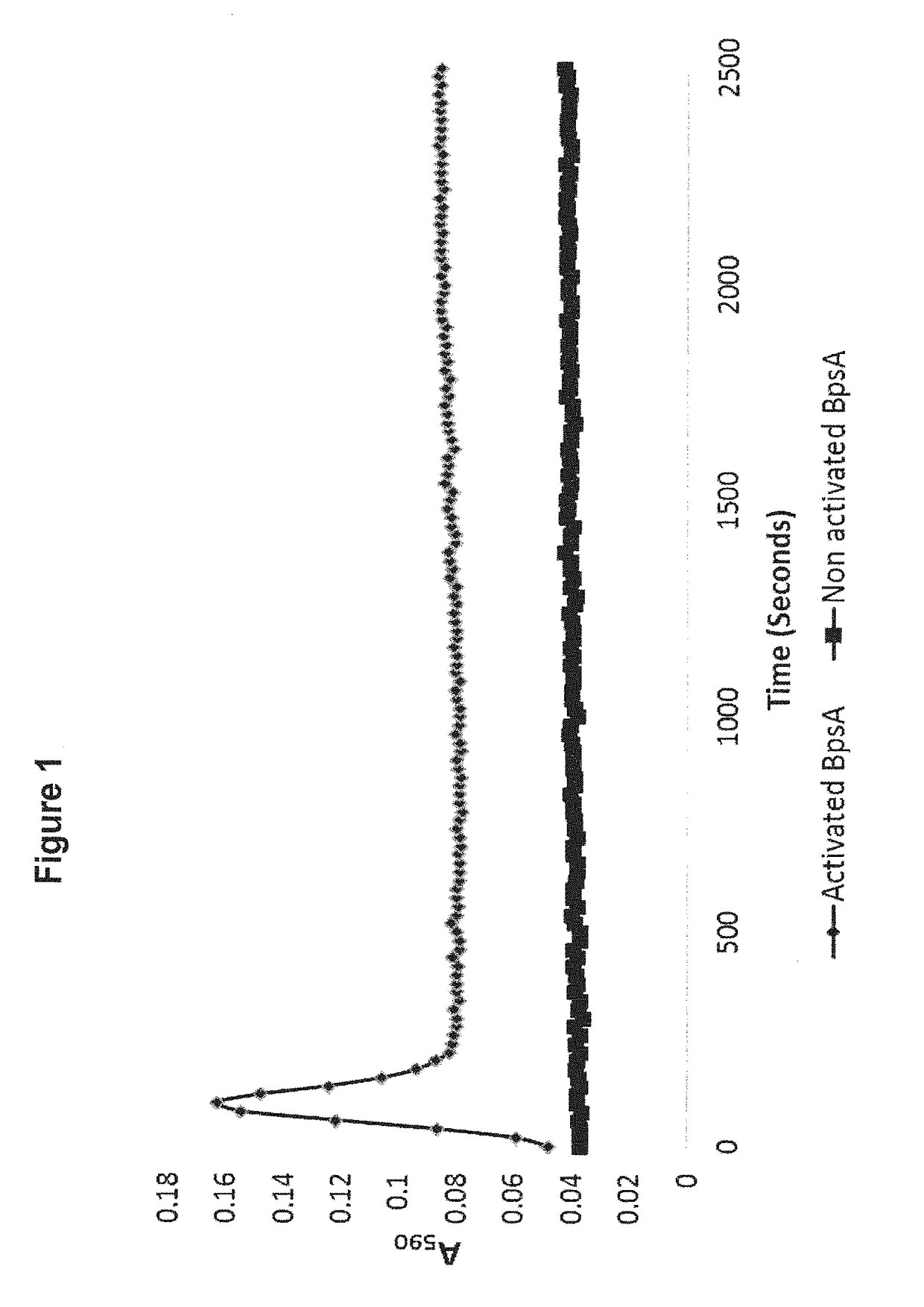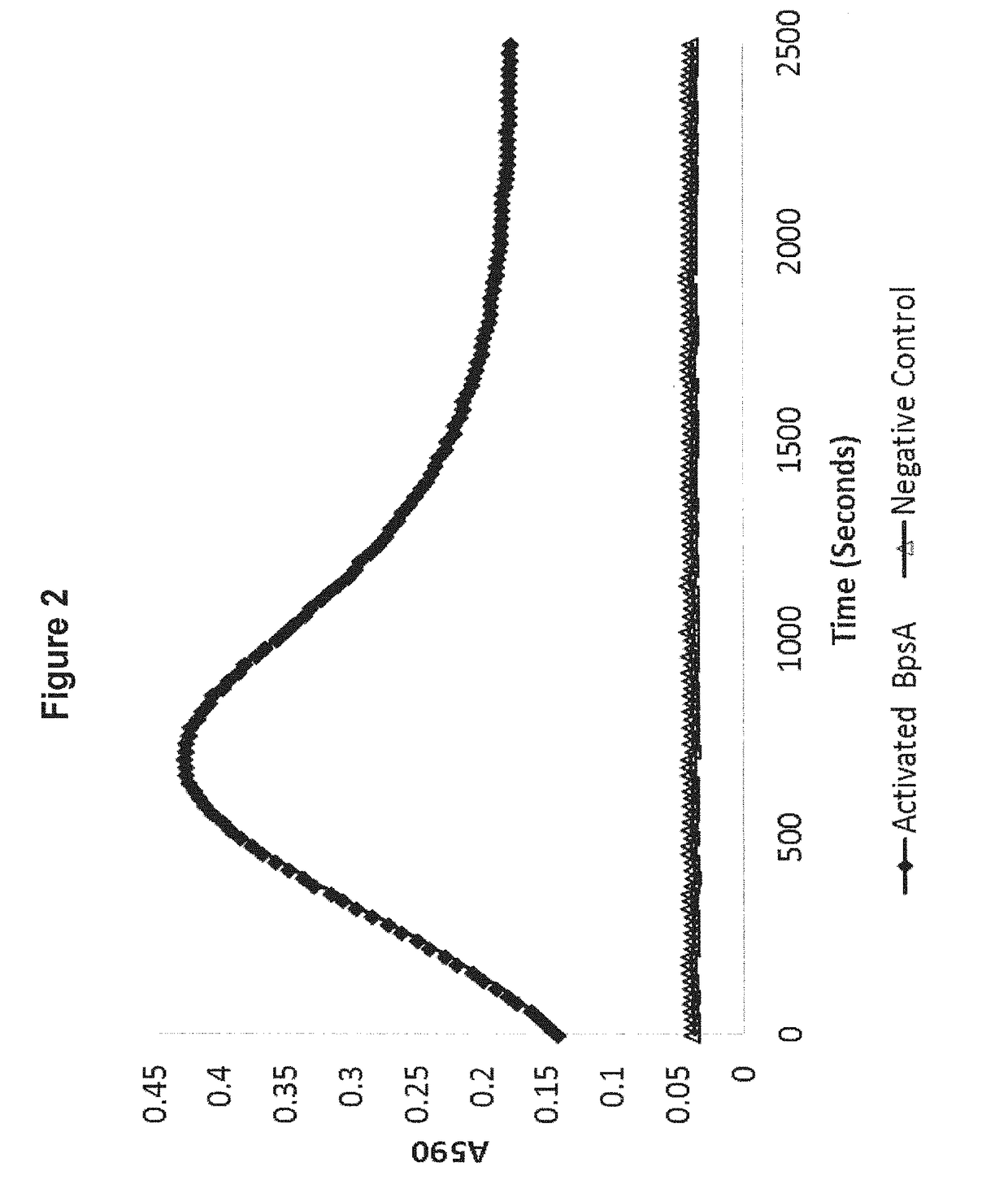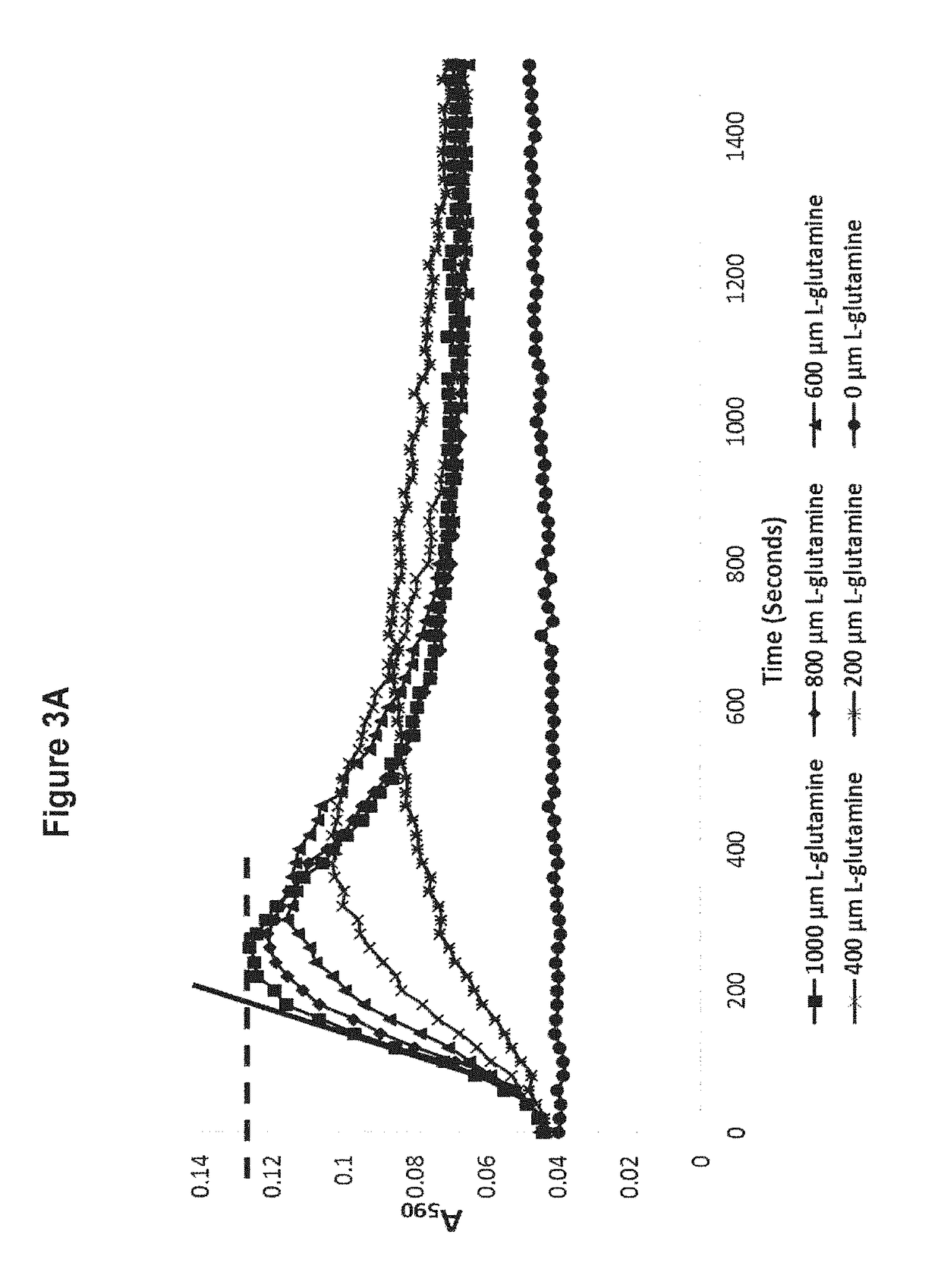Methods of detecting and measuring glutamine and analogues thereof, and methods related thereto
a glutamine and analogue technology, applied in the field of methods of detecting glutamine and its analogues, can solve the problems of difficult to quantify the clinical benefit derived, inconclusive studies examining the effects of excessive glutamine consumption, and glutamine supplements can reduce healing time after operations
- Summary
- Abstract
- Description
- Claims
- Application Information
AI Technical Summary
Benefits of technology
Problems solved by technology
Method used
Image
Examples
example 1
Activation of BpsA Enzyme Post-Purification
[0190]Apo-BpsA was converted to holo-BpsA in vitro, post-purification, as follows. Purified BpsA and Sfp were obtained by standard Ni / NTA chromatography following their expression as His6-tagged recombinant polypeptides. The bpsA and sfp genes were cloned into and expressed from plasmid pET28a+in E. coli BL21 (DE3) cells, as described for BpsA and other PPTases by Owell et al (2011), with the modification that BpsA expression and purification was performed in an entD gene-deleted strain of E.coli BL21(DE3). This was done to avoid any activation of BpsA by endogenous EntD PPTase prior to BpsA purification. The reagents were prepared as indicated in Table 1.
TABLE 1Reagent (indicated concentrations are asper final 100 μL reaction volume)2 μM BpsA12.5 μM CoA0.1 μM Activating PPTase (Sfp from B. subtilis)5 mM MgCl212.5 mM Tris pH 7.8ddH2O to 25 μL
[0191]Reagents were added to a 15 ml tube. This was vortexed for two seconds and transferred to a 30...
example 2
Activation of BpsA Enzyme Prior to Purification
[0195]It was further demonstrated that apo-BpsA is able to be converted to holo-BpsA prior to purification. The experiments were performed as follows. BpsA and the PPTase PcpS from P. aeruginosa were individually expressed as His6-tagged recombinant polypeptides from genes cloned into plasmid pET28a+ in separate 500 ml cultures of E. coli BL21(DE3) cells, as above. Following growth for 24 hours at 18° C., 200 rpm, the cultures were then individually pelleted and resuspended in Ni / NTA Bind buffer (pH 7.8, supplemented with 12.5% v / v glycerol). Each resuspended pellet was then lysed using a French press.
[0196]The cell lysates were then centrifuged at 31,000 g to separate the soluble and insoluble fractions. The BpsA and PcpS soluble fractions were mixed then supplemented with 100 μL of 10 mM CoA and incubated at 25° C. with shaking at 200 rpm for 2 hours. The mixed fraction was then centrifuged at 48,000 g for 20 minutes to remove the ins...
example 3
Standard Curves Established for the BpsA Enzyme Assay Via Kinetic Measurements
[0199]FIGS. 1 and 2 indicate that production of the blue pigment indigoidine by BpsA in aqueous solution yields a characteristic curve. It is observed that absorbance at 590 nm initially increases, reaches a maximum, then diminishes to an intermediate minimum before slowly increasing once again. The reasons for this characteristic reaction curve are still under investigation, but it may reflect the poor solubility of indigoidine in H2O.
[0200]Experiments were then performed to determine whether the BpsA-catalysed conversion of L-glutamine into indigoidine can be used to estimate the starting concentration of L-glutamine present in a solution. The experiments employed kinetic measurements derived from the initial peak of indigoidine production.
[0201]For this investigation, the following L-glutamine concentration standards were each prepared in ddH2O at a final volume of 100 μL in individual wells of a 96-wel...
PUM
 Login to View More
Login to View More Abstract
Description
Claims
Application Information
 Login to View More
Login to View More - R&D
- Intellectual Property
- Life Sciences
- Materials
- Tech Scout
- Unparalleled Data Quality
- Higher Quality Content
- 60% Fewer Hallucinations
Browse by: Latest US Patents, China's latest patents, Technical Efficacy Thesaurus, Application Domain, Technology Topic, Popular Technical Reports.
© 2025 PatSnap. All rights reserved.Legal|Privacy policy|Modern Slavery Act Transparency Statement|Sitemap|About US| Contact US: help@patsnap.com



